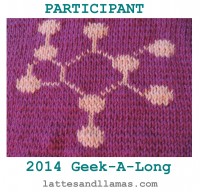Here is another entry moved from my aol journal, which thanks to blogger and aol and a little bit on my part is now
here. The original entry was
heels and toes. I'm expanding the entry and limiting this part to just heels......
One of my favorite heels for a toe-up sock is the
Widdershins heel – which looks almost exactly like a cuff-down heel flap heel. My other favorite heel for a toe-up sock is
Fleegle's – which looks almost like a short-row heel but isn't. By the way, widdershins means backwards, "in the opposite direction".
Here is a paraphrasing of the directions for the Widdershins heel:
Gusset increases: The first question in making the heel is when to start making gusset increases (to mirror gusset decreases for the usual cuff-down heel flap). The answer is:
- Figure out how long you want the heel flap. For an average cuff-down heel flap, one picks up 15 sts on each side of the heel flap – which means the heel flap itself has 30 rows.
- Start making gusset increases this number of rows before the end of the sock. So, for a 30-row heel flap, you'd start making gusset increases on every other round starting at 30 rows less than the total length of the sock.
Next determine how many gusset increases to make:
- Divide the number of sole stitches by 9. Round down.
- Add 1.
- Double the result.
- Subtract this number from the number of rows for the heel flap.
For a sock with 62 sts around (31 instep sts and 31 sole sts), you would divide 31 by 9 and round down. The result is 3. Add 1 to get 4. Double it to get 8. Then subtract this from 30 to get 22. So, you'd make 11 pairs of gusset increases to arrive at 53 sole sts. ( 53 = 31 + 22)
Finish the bottom of the heel: After finishing the gusset increases, place markers to mark the sides of the heel flap. For this example of a 30 row heel flap, place markers 15 sts in from either side, leaving 23 sts between markers. The stitches between markers are called heel sts. The sts outside the markers are called gusset sts. Then, working only on the heel sts:
- Row 1: k to 2 sts before marker, inc1, k1, turn
- Row 2: s1, p to 2 sts before marker, inc1, p1, turn
- Row 3: s1, k to 2 sts before gap, inc1, k1, turn
- Row 4: s1, p to 2 sts before gap, inc1, p1, turn
Rep rows 3 and 4 until the number of sts between markers is the same as the original number of sole sts – for the example, 31.
Note: For a more rounded heel, replace “2 sts” in Rows 3 and 4 with “3 sts”. For an even more rounded heel, change it to “4 sts” or maybe even “5 sts” for the last repeat of the two rows.
Note: For a squarer heel, repeat Rows 1 and 2 until the number of sts between markers is the same as the original number of sole sts. (Do not do rows 3 and 4.)
Heel flap: Then start making the heel flap:
- Row 1: s1, k to last heel st, ssk last heel st and 1 st from left gusset, turn
- Row 2: s1, p to last heel st, p2tog last heel st and 1 st from right gusset, turn
Repeat Rows 1 – 2 until there is only 1 st to be picked up, a right gusset st. You'll be ending with a Row 1. Do not turn. Start working in the round. When you reach the sole sts again, start with a k2tog to get rid of the last gusset st.
The heel is now finished.
 Before October is over, I thought I'd include a couple or three pics from our visit to Ohio. We went to Ohio to attend a friend's wedding. We stayed with a couple dear friends of our while there. (My DS came out from Oregon to take care of our mom here in Illinois while we were gone.) The wedding was one of the nicest I've ever been to. It was held in the Franklin Park Conservatory. Unfortunately, I forgot to bring my camera to the wedding, and so I don't have any pictures from there or from downtown Columbus.
Before October is over, I thought I'd include a couple or three pics from our visit to Ohio. We went to Ohio to attend a friend's wedding. We stayed with a couple dear friends of our while there. (My DS came out from Oregon to take care of our mom here in Illinois while we were gone.) The wedding was one of the nicest I've ever been to. It was held in the Franklin Park Conservatory. Unfortunately, I forgot to bring my camera to the wedding, and so I don't have any pictures from there or from downtown Columbus. A trip to the area wouldn't be complete for me without a visit to Leatherlips. Here's the statue. And below that is a picture of the Scioto River that the statue overlooks.
A trip to the area wouldn't be complete for me without a visit to Leatherlips. Here's the statue. And below that is a picture of the Scioto River that the statue overlooks.


